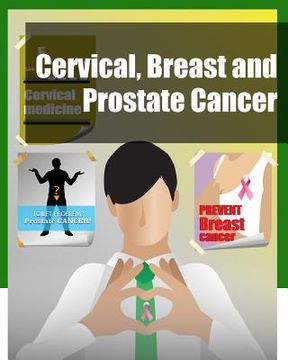Synopsis "Cervical, Breast and Prostate Cancer (in English)"
Cervical cancer and breast cancer are two of the most common cancers found in women. Cervical cancer is when cancer arises from the cervix. Early on there are typically no symptoms. Later symptoms may include abnormal vaginal bleeding, pelvic pain or pain during sex. Breast cancer is when cancer develops from breast tissue. Signs of breast cancer may include a lump in the breast, a change in breast shape, dimpling of the skin, fluid coming from the nipple, or a red scaly patch of skin. Prostate cancer is when cancer develops in the prostate, a gland in the male reproductive system. It may initially cause no symptoms. In later stages it can cause difficulty urinating, blood in the urine, or pain in the pelvis, back or when urinating. This book provides some latest research and findings on breast cancer, cervical cancer and prostate cancer. The aim of this book is to serve as an important reference book for individuals working in biomedical laboratories, and for clinical professionals. There are totally 13 chapters in this book. Chapter 1 proposes an outlook on different endoscopic surgical procedures to treat cervical cancer, using traditional laparoscopy and robotics. Chapter 2 reviews the clinical results of carbon ion radiotherapy (C-ion RT) for uterine cervical cancer. Carbon-ion RT has been established as a safe short-term treatment for locally advanced uterine cervical cancer. Chapter 3 summarises chrysin inhibits proliferation, induces apoptosis and reduce angiogenesis in most tested cancer cells, including cervical cancer cells. Chapter 4 shows that involving physicians in the promotion of public health programs and initiatives is a viable option. Chapter 5 summarizes the published findings about the controversial role of METCAM, a cell adhesion molecule, in the progression of human breast cancer. Chapter 6 focuses on the biology of neu in breast cancer - the potential mechanisms that may contribute to tumor resistance and the numerous uncertainties that persist despite the bona-fide progress made in treating this particular subtype of breast cancer. Chapter 7 describes the mechanisms by which estrogen can exert its role in estrogenresponsive cells, focusing on specific aspects of estrogen receptor signaling. Moreover, this chapter shows how some of the proteins involved in estrogen receptor signaling can be used as predictive markers in breast cancer and describes a proposed clinical study related to the combined use of two drugs (bortezomib and tamoxifen) as therapeutic agents for estrogen receptor negative breast cancers. Chapter 8 summarizes the recent studies indicating that AngII facilitates breast cancer metastasis by contributing to the cross-talk between cancer cells and the host stroma. Chapter 9 focuses on a rationale pharmaceutical development along with a detailed understanding of biological effects so as to accelerate the incorporation of nanocarriers in breast cancer therapy. Chapter 10 summarizes the mTOR pathway and the clinical results in breast cancer treatment, relating them to results obtained using cultured MCF-7 breast cancer tamoxifen resistant sublines. Chapter 11 discusses how to develop a standard extraction method, yielding tomato products which are suitable for cell cultures, and enable product comparison of different tomato varieties. Chapter 12 describes principles and processes that are involved in investigating biological or clinical problems with nuclear magnetic resonance (NMR) based metabolomics - an approach that involves the global analysis of metabolites. The authors use prostate cancer as a case study to outline the processes, applications and potential of metabolomics for inform scientists and clinicians. Chapter 13 discusses the epidemiology, screening, diagnosis and treatment options of prostate cancer and its association with osteoporosis.

